JACKSONVILLE, Fla. – The diagnosis was Entamoeba histolytica, which is an infection caused by ingesting an amoeba that produces fatigue, abdominal pain, weight loss, and a few more symptoms you don’t want to have when you are more than 9,000 miles from home.
That’s where Christopher Trinidad happened to be during a visit to his parents’ homeland in the Philippines the summer before the eighth grade.
Born and raised in Jacksonville, Christopher’s immune system was not accustomed to some of the pathogens found in the local food. He had not built up a resistance like residents have. Lying in a hospital bed in the city of Bacolod, while the antibiotics did their thing, Christopher had this thought: “This has to be my science fair project.”
And so it was.
After returning home, Christopher ordered microorganisms online. “Safer organisms,” he said, than the one that waylaid him a few weeks earlier. He experimented with various items found in the kitchen pantry – ginger and garlic – mixed them with water and other ingredients and developed a solution that killed the organisms.
“What if,” Christopher thought, “we use these solutions on the actual thing? This can help so many people.”
His project finished first at a regional science fair.
“Impressive, right? Wait until you hear what he did his freshman year,” said Carla Chin, director of marketing and communications at Bishop Kenny High School in Jacksonville.
Christopher, a sophomore, attends the parochial Catholic school on a Florida education choice scholarship managed by Step Up For Students.
He sat in a chair inside Chin’s office. His father, Greg, sat in another and proudly listened as his son, with a mixture of pride and modesty, described the project that earned first place at a regional science fair and then a bronze medal at the Genius Olympiad and a $15,000 scholarship to the Rochester Institute of Technology at a global competition held in Rochester, New York.
Using an electroencephalogram (EEG), which measures electrical activity in the brain, artificial intelligence, virtual reality, and violin music, Christopher was able to predict the moods and emotions of stroke victims who are unable to speak, thus creating a line of communication with doctors.
“By using brain waves, doctors can know what their patients are feeling, which would lead to better decision-making,” he said.
Michael Broach is the Vice Principal at Bishop Kenny and the Director of Mission Integration, as well as the AP Capstone Department chair. He was responsible for approving Christopher’s science project.
“That was one of the most sophisticated projects, I think, that I've seen in my years of being here,” Broach said. “And just the way his mind works is well above his peers. Well above what you would expect of somebody of his age.”
Christopher is 15.
He wants to be a neurosurgeon.
“I’ve always been fascinated with the brain since I was little,” Christopher said. “It controls everything in our body. It’s really interesting, and going into surgery, fixing people's brains is really complex, and that's what I love about it.”
His parents – Greg and Shiela – are both nurses, so Christopher was raised around medical science. Their house is filled with textbooks related to their careers. Christopher has read them all.
The valedictorian of his middle school, Christopher has a 4.3 weighted GPA at Bishop Kenny. He chose to attend the Catholic high school because it aligns with his faith and has a high academic standard.
“It challenges me,” he said. “I know there are other people here I can talk to, and it gives me a greater experience.”
He’s not the only student at Bishop Kenny who knows what an electroencephalogram is and how it works.
While he spends a considerable amount of time working on his science fair projects (keep reading to learn about what his plans are for this year’s project), he’s very active at school. Christopher is a member of the Science Club, Medical Career Club, St. Vincent de Paul Society, campus ministry, and the Brain Brawl. He plays the piano at the monthly mass. He’s also first violin for the Jacksonville Symphony Youth Orchestra.
Listening to his son talk, Greg had one feeling. “Blessed,” he said. “He has a humble heart. We try to remind him always what’s hard.”
Greg understands hard.
Raised in a small town an hour’s plane ride from Manila, Greg’s childhood was humble at best. He went through elementary school with only two pairs of shoes. He caught rides to school on trucks headed to the sugarcane fields on days when his mom couldn’t afford bus fare.
“I didn’t have the opportunity to join the Boy Scouts,” Greg said. “My mom didn’t have the money.”
Greg understood the power of an education and where it could lead him. He became a teacher until, at age 26, he immigrated to the United States in search of the American Dream.
He worked odd jobs and became a certified nursing assistant. From there, he attended nursing school in St. Augustine. He now works as a traveling nurse in the cardiac catheterization labs in hospitals around North Florida. He became a traveling nurse for the pay because he and Sheila support three family members in the Philippines.
That’s why Christopher traveled to the Philippines the summer before eighth grade, to see where his parents’ stories began.
“I wanted him to see and feel the difference of being here in this world compared to a third-world country,” Greg said.
The lesson wasn’t lost on his son.
“I just feel really lucky that I'm here in America and I have more opportunities than some kids have in the Philippines, and I’m not going to let this go to waste,” Christopher said.
Greg said he is grateful for the Florida education choice scholarship that helps pay Christopher’s tuition at Kenny.
“In the Philippines,” he said, “if you don’t have money, you don’t go to school.
“He has this opportunity of having this scholarship, and I'm telling him, you're way more blessed than what other people have in other states. We're so thankful that all these opportunities are coming for our son.”
Christopher’s next opportunity is this year’s science fair, where he will take last year’s project a step further.
“I'm planning to build a rehabilitative exoskeleton so it can help people with movement disabilities,” he said. “I can also use an EEG in that, so they can think about what they're going to do with their exoskeleton, which basically helps them move. It would correlate to their actual thoughts. So, if they wanted to walk, they would be able to think it, then the exoskeleton would help them walk.”
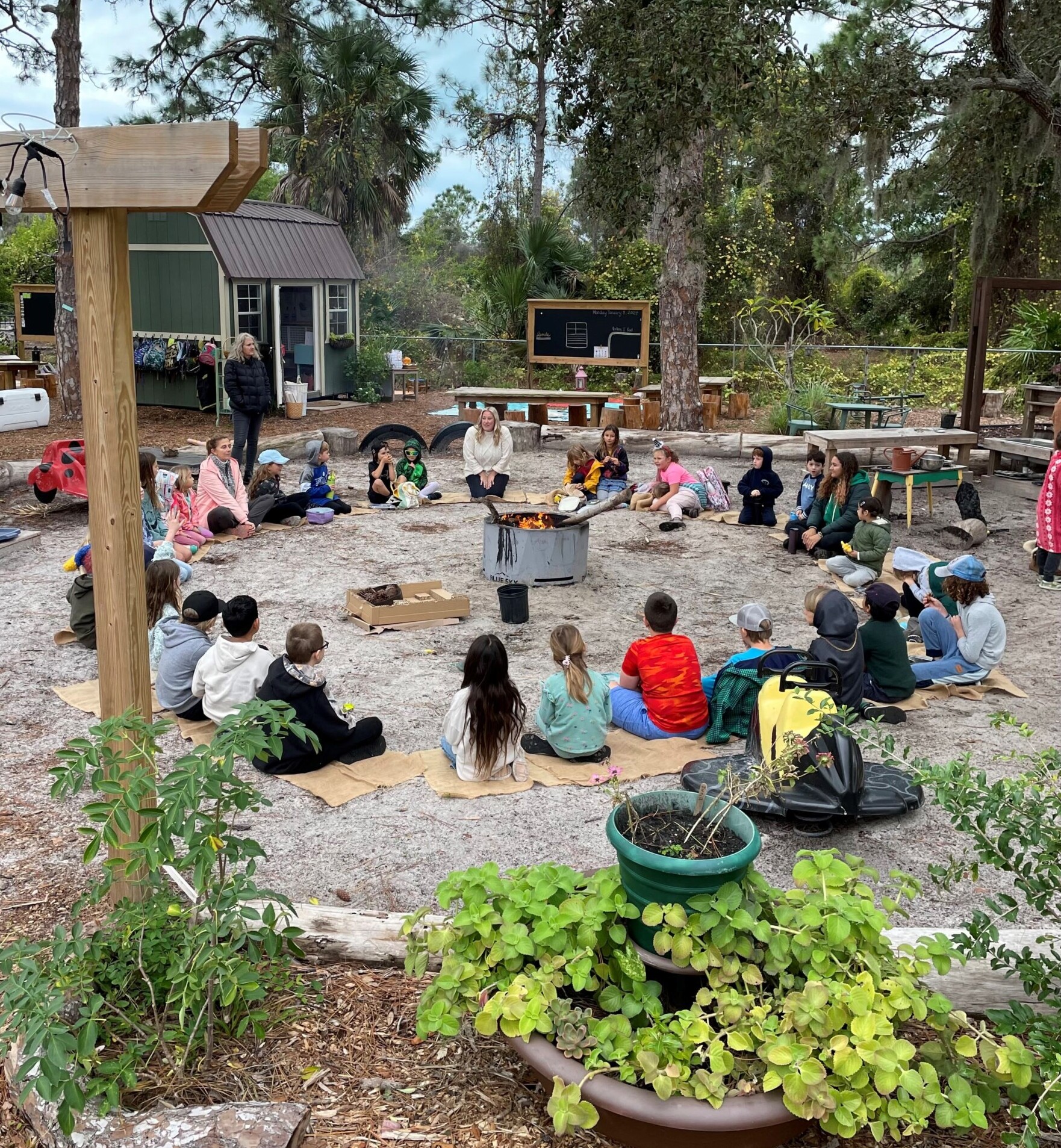
Roots Academy in Sarasota lets students spend much of their time outdoors to learn amid nature while still offering a rigorous core academic program. Photo courtesy of Roots Academy
SARASOTA, Fla. – When Briana Santoro and her family moved to Florida in 2021, she set out to find the perfect school for her two young sons. She wanted a school that would be nature immersed, Montessori influenced, and academically rigorous. She found good ones that offered pieces of what she wanted, but none that put the whole puzzle together. So Santoro did what an accelerating movement of education entrepreneurs, including parents, are now doing all over Florida:
She created her own school.
“I just got to the point where I thought, ‘I’m going to solve my own problem,’” said Santoro, who has a background in business strategy consulting.
Roots Nature and Leadership Academy bills itself as “thoughtfully rooted in nature.” It serves 60 students in grades Pre-K through six, up from 25 when it opened two years ago. Nearly all of them use state-supported choice scholarships.
Santoro’s detailed vision includes fully engaged citizens.
As the second half of the school’s name suggests, creating future leaders is mission critical. There’s a big emphasis on problem solving, emotional intelligence, and entrepreneurship. From the earliest ages, the students literally get their hands dirty working on sophisticated science projects that touch on some of the most pressing environmental challenges.
First- and second graders recently learned how monoculture lawns and pesticides hurt pollinators, then created informational brochures and wildflower seed packets to hand out in their neighborhoods. Third- and fourth graders studied regenerative farming, then got a demonstration from scientists, via Zoom, on how soil samples can reveal the chemical differences between organic and inorganic approaches. Fifth- and sixth graders, meanwhile, learned how to make a vermiculture composter from a University of Florida extension agent, then shared their knowledge in a presentation to a community group.
“They’re learning skills that are going to be incredibly useful in how they live their lives,” Santoro said. “Appreciation for nature is going to set this generation up to solve the problems we’ve created.”
Roots rents space from a church. It has multi-age classrooms devoted to music, yoga, and projects. But clearly, its heart isn’t inside.
Santoro was inspired by Richard Louv’s “Last Child in the Woods: Saving Our Children from Nature-Deficit Disorder.” She wanted to ensure her school honored children and “the essence of their childhood.”
To that end, the students spend 70 percent of their time outdoors, either on a whimsical campus where poodle chickens strut and peck under oaks and pines and a dozen varieties of fruit trees, or in an adjacent pine forest where they build forts, track animals, and otherwise range free for hours at a pop.
This is going to sound too good to be true, but bald eagles built a nest nearby and are frequently visible to students going about their day.
“The school is magical,” said Sarah Love, whose sons Harper, 9, and Carey, 12, attend Roots. “Children are laughing while butterflies are flying, and eagles are soaring overhead. I see kids learning academics while they’re on a mat on the ground with the sun shining on them. It just fills my heart.”
The school’s nature-inspired learning opportunities don’t end there.
Roots includes a “hen hotel” the students maintain themselves; learning “barns” full of Montessori materials the students use outside; and plans for a “special skills area” that will include everything from pottery and woodworking equipment to an outdoor fire cooking kitchen.
Gardening and archery are part of the curriculum. So are deep lessons about “gut health.” Beekeeping is on the horizon.
“They’re going to be better citizens if they know how to grow their own food, if they know how to care for the planet,” Santoro said.
Roots is as good an example as any to highlight one of the most underappreciated story lines to emerge as education choice has become the new normal in Florida:
Choice offers something for everyone.
This year, more than 500,000 students are using choice scholarships in Florida. As more and more parents signal their preferences for learning options, and more schools and other education providers emerge to serve them, more families and educators alike are realizing they can have exactly what they want. The evolving education landscape is increasingly dynamic and diverse.
By 2026, Roots expects to serve 75 students in Pre-K through eighth grade. In the meantime, it has 30 students on a wait list.
“Education is changing drastically,” Santoro said. “There’s a freedom of expression in education that’s never been there before.”
Santoro grew up in Canada. After a successful stint in business consulting, she went back to school to study nutrition. She became a certified nutritional practitioner, wrote a best-selling cookbook, and co-founded a company that specialized in high-end food supplements for kids.
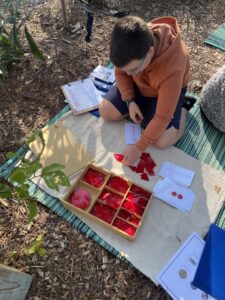 With Roots, she wanted not only a top-notch program, but one that could be accessible to families regardless of income and could pay teachers well so she could attract the best.
With Roots, she wanted not only a top-notch program, but one that could be accessible to families regardless of income and could pay teachers well so she could attract the best.
The Roots staff is eclectic, talented, and all in on the mission. Several formerly taught in public schools.
On the school’s website, one of the teachers quotes famed environmental writer Rachel Carson. Another notes she was raised in a family of environmental activists who traveled the world with iconic oceanographer Jacques Cousteau. Yet another embraced organic farming and permaculture while living in Thailand.
“I was looking at, who is going to be breathing life into my children?” Santoro said. “If children don’t have a deep compassion for the earth … it’s just not sustainable. What better way to teach that than to live it every day?”
Parent Corbyn Grieco said there is a lot more going on at Roots than green vibes.
Her daughter is climbing trees, building pollinator gardens, and making homemade elderberry syrup. But the school also focuses on core academic standards, Grieco said, and constantly communicating with parents about how their kids are faring with them. Her daughter is reading several grades above grade level and digesting serious knowledge about health, science, and business development.
That’s the sweet spot, Grieco said: Roots is able to achieve academic success while honoring the magic of childhood.
“To this day,” she said, Roots “is the greatest choice we’ve ever made.”
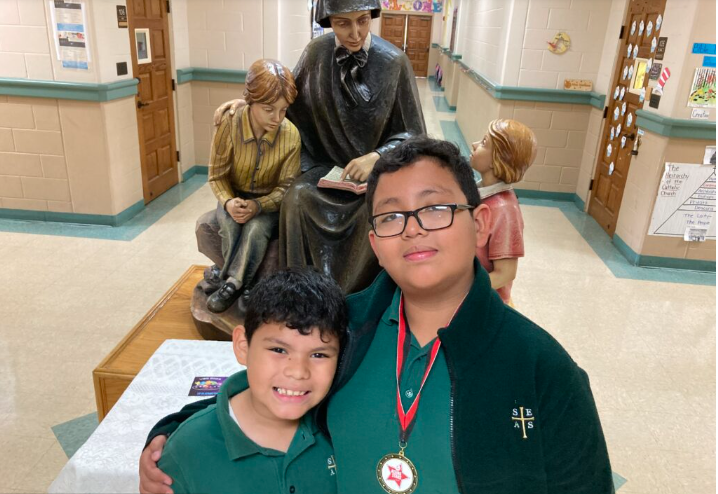
Jesus Martinez-Cruz, right, and his brother, Christian, receive the Family Empowerment Scholarship for Educational Options to attend Saint Elizabeth Ann Seton Catholic School in Palm Coast, Florida.
PALM COAST – Every school day at 7 a.m., a small bus rolls to a stop in front of the rectory of the Catholic church in Crescent City. Waiting to board are a handful of students, including Jesus Martinez-Cruz and his little brother, Christian.
They are headed on a 50-minute ride to Saint Elizabeth Ann Seaton Catholic School in Palm Coast.
Jesus and his schoolmates are part of the Rural Education Initiative, a program started during the 2020-21 school year by the Diocese of St. Augustine as a means of creating opportunities for a Catholic education to students who live in sparsely populated areas that cannot support a Catholic school.
Crescent City’s population is under 1,700, and St. John the Baptist Catholic Church, where Jesus and his friends catch the bus, does not have a Catholic school.
If not for the REI, these children would not receive a Catholic education. And if not for the scholarships managed by Step Up For Students, many of those families would not be able to attend a Catholic school.
Jesus, a sixth-grader, and Christian, a second-grader, receive the Family Empowerment Scholarship for Educational Options.
“To have the (Rural Education Initiative), for his parents to be able to choose a Catholic school that they want so much for their children and Jesus wants for himself, they would never have that opportunity without Step Up,” said Saint Elizabeth Ann Seaton Catholic School principal Barbara Kavanagh.
There have been days when the bus broke down and the boys’ parents had to drive them back and forth to school. That’s more than 90 minutes round trip, twice a day. As it is, the bus returns the students to Crescent City at 4 p.m.
But Elvira Cruz and her husband, Jesus Martinez-Puente, are not deterred by the distance and the drive from their home to their children’s school.
To continue reading, click here.

The 2022-23 school year got off to a strong start for education choice scholarships in the Sunshine State, with several programs seeing record-breaking enrollment.
Overall, more than 240,000 scholarships were funded, a 26% growth over the prior school year. Step Up For Students, the state-approved nonprofit scholarship funding organizations that helps administer the scholarships, awarded more than 200,000 scholarships for the first time.
Step Up For Students, which hosts this blog, operates five scholarship programs on behalf of the state, including the income-based Florida Tax Credit Scholarship and Family Empowerment Scholarship for Educational Opportunity; the Family Empowerment Scholarship for Students with Unique Abilities; the Hope Scholarship for public school students who have been bullied; and the New Worlds Reading Scholarship Accounts for public school students in grades K-5 who struggle with reading.
Students who qualify for the Florida Tax Credit Scholarship and the Family Empowerment Scholarship for Educational Opportunity also may apply for transportation scholarships to attend a different public school.
Florida scholarship enrollment 2022-23
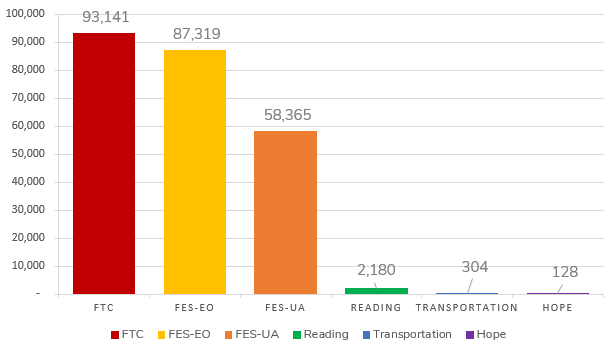 Several scholarship programs hit new milestones.
Several scholarship programs hit new milestones.
The Family Empowerment Scholarship for Students with Unique Abilities program eclipsed more than 50,000 students for the first time. Enrollment grew by 131% after the program absorbed the McKay Scholarship for students with special needs. The Family Empowerment Scholarship for Students with Unique Abilities is the largest education savings account program in the nation. Of its total enrollment, more than 30,000 students were enrolled in a private school.
Combined, the income-based scholarships (Florida Tax Credit Scholarship and Family Empowerment Scholarship for Educational Opportunity) also saw record enrollment with 180,460 students served so far in 2022-23. The average student on these programs lives in a household of four earning less than $43,000 a year. Sixty-nine percent of students are non-white, and 51% live in single-parent households.
Of the students on the income-based scholarship programs, nearly 100,000 qualified through government needs-based programs such as food stamps; 8,072 are military dependents; 5,401 are dependents of law enforcement officers; 2,716 are siblings of students on the Family Empowerment Scholarship for Students with Unique Abilities; and 499 are in foster care.
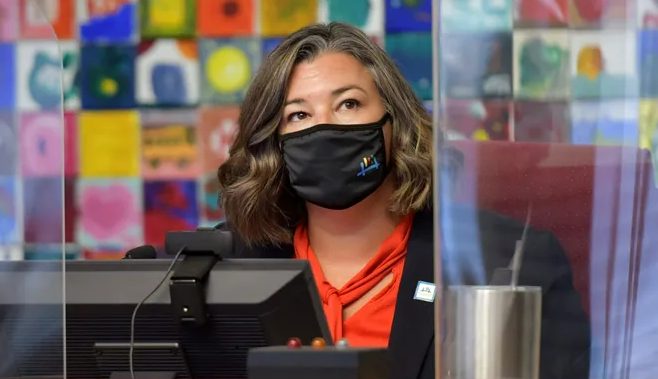
Duval County School Board member Elizabeth Anderson recently cautioned that an increase in school funding doesn’t necessarily mean the district has additional money for teacher raises and school programs because the funds a district receives “will go through voucher programs and our charter schools.” PHOTO: Bob Self/Florida Times Union
With economic difficulties mounting for Florida’s school districts, budgets are tightening and competition for funds is intensifying.
So is confusion.
Whether intentional or not, something is being lost in translation in education budget reporting. Several recent news stories have featured district officials who are blaming home education, charter schools and, most of all, the Family Empowerment Scholarship, for their budget woes.
Here are some recent examples:
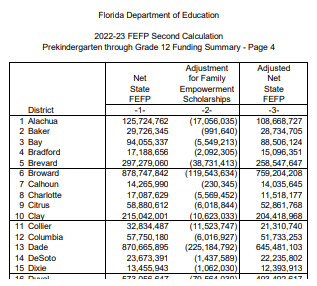 Districts point to the table above in the Florida Education Finance Program (FEFP) as evidence they are paying for the scholarships when that money could be funding their own priorities.
Districts point to the table above in the Florida Education Finance Program (FEFP) as evidence they are paying for the scholarships when that money could be funding their own priorities.
That’s not entirely accurate.
First, Florida’s school districts do not pay for private school scholarships through the Family Empowerment Scholarship programs. The state does.
And despite districts’ claim that the money is passing through their hands, not a single penny meant for the scholarships ever reaches district coffers.
The money exists only on this table, and it is intended only to help calculate the scholarship values as required by law.
State law sets the scholarship values at 100% of the unweighted per-pupil funding from the FEFP (minus some funds). This results in different scholarship values varying widely between counties, and even between elementary, middle, and high school grades within each county.
To determine 201 different scholarship values, state analysts place the students and dollars into the counties for calculation purposes only. No district should be budgeting based on the “Net State FEFP” column because that’s not money it will ever receive.
Duval couldn’t invest those dollars back into its public schools any more than Pasco could use FEFP funds to raise teacher salaries. If their students never took a scholarship, the districts might see those students enroll and, if so, the budget would increase. But that money would have to go toward educating the influx of additional students, and that same sum couldn’t be used to also pay for improvements or pay raises.
You just can’t spend the same dollar twice. It’s money, not magic.
What’s more, the scholarship programs use only state FEFP funds and do not touch locally raised support. In other words, districts get fewer students, but they can also keep more local money for each student that remains.
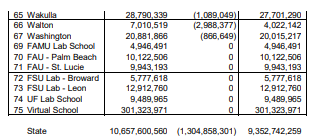 The state uses a different way to calculate funding for Laboratory Schools and Florida Virtual School (as seen in the chart above). Despite students exiting local public schools, along with the dollars that follow them, funding for Laboratory Schools and Florida Virtual School isn’t shown as “removing” funds from local school districts. Instead, they are funded separately, as if they were their own districts. Functionally, it has a similar impact on district enrollment and budgets as the Family Empowerment Scholarship.
The state uses a different way to calculate funding for Laboratory Schools and Florida Virtual School (as seen in the chart above). Despite students exiting local public schools, along with the dollars that follow them, funding for Laboratory Schools and Florida Virtual School isn’t shown as “removing” funds from local school districts. Instead, they are funded separately, as if they were their own districts. Functionally, it has a similar impact on district enrollment and budgets as the Family Empowerment Scholarship.
Finally, despite claims of budget shortfalls, overall funding increased between the 2021-22 and 2022-23 school years. Even after removing funds for the Florida Empowerment Scholarship program, what is left over – the Adjusted State FEEP – is higher than the year before. Per-pupil funding is up for each of the districts, too. And even if the scholarship amounts claimed did in fact flow through the districts, they would amount to less than 3% of their total budgets.
 Note that the average value of a Family Empowerment Scholarship for Educational Options (FES-EO) for 2022-23 is $7,700, roughly half what districts spend per pupil.
Note that the average value of a Family Empowerment Scholarship for Educational Options (FES-EO) for 2022-23 is $7,700, roughly half what districts spend per pupil.
The bottom line is that Florida doesn’t pay school districts to teach empty desks. Families aren’t forced to use the scholarships. They willingly choose them because they are dissatisfied with district offerings and desire more options in their children’s education.
Districts should seek the answers as to why.

Megan and Jameson Luten and their children, Patrick, Ellie and Julia
On this episode, reimaginED Senior Writer Lisa Buie talks with Megan Luten, a mother of three from Jacksonville, Florida, whose 5-year-old daughter, Ellie, attends Catholic kindergarten thanks to the Family Empowerment Scholarship Education Options scholarship.
Luten, a speech therapist, discusses the search she and her husband, Jameson, a registered nurse, undertook to find the right educational option for Ellie, who, like a many young children, gets a little anxious at times.
After looking at traditional district, charter, and private schools, they decided that Holy Family Catholic School was the best environment for their daughter to start her formal education.
“We found out this summer that thanks to the new income threshold for the state scholarship, we were going to be eligible for it, and that was really huge in our decision making in sending Ellie to Catholic school … we probably would not have been able to do that had we not been eligible for the state scholarship, so we are really, really thankful for that. It’s been a huge blessing for our family.”
EPISODE DETAILS: